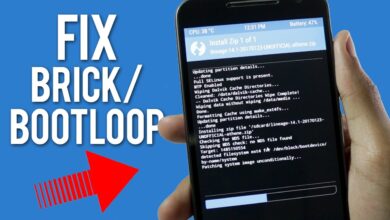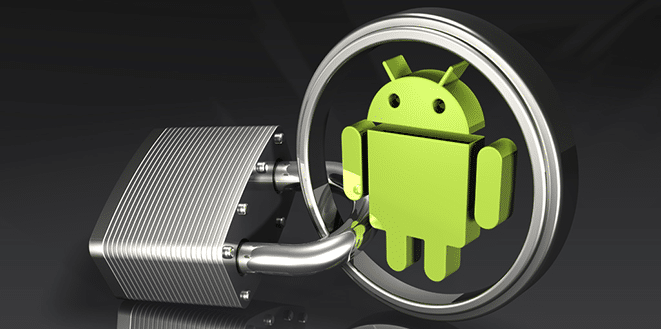
1.1 What is Fastboot Mode?
Fastboot Mode is a crucial feature found in many Android devices that allows users to communicate with the device’s bootloader directly from a computer. It serves as a gateway to various low-level commands and functions, enabling users to perform advanced operations on their devices. Fastboot Mode is typically accessed when a device is turned off, and it provides a reliable means to flash custom firmware, recover devices from boot loops, unlock bootloaders, and more. In Fastboot Mode, the device’s bootloader is in control, allowing users to execute commands such as installing custom recoveries, flashing system images, and modifying partitions. This mode provides a direct line of communication between the device and a computer, making it a powerful tool for advanced users and developers alike.
1.2 How does Fastboot Mode work?
When a device is in Fastboot Mode, it establishes a connection with a computer via a USB cable. This connection allows the computer to send commands directly to the device’s bootloader, which then executes them accordingly. The bootloader acts as an intermediary between the computer and the device’s internal system, enabling users to make changes and modifications at a low level. To enter Fastboot Mode, users typically need to initiate a specific key combination or use a command from the computer. Once in Fastboot Mode, the device will display relevant information on the screen, indicating that it is ready to receive commands. Users can then execute a wide range of operations, such as unlocking the bootloader, flashing custom firmware, or even accessing the device’s recovery mode.
1.3 Why do you need Fastboot Mode?
Fastboot Mode is an essential tool for Android device enthusiasts, developers, and power users. It offers a level of control and access that is not available in regular device operation. Here are a few reasons why you may need to use Fastboot Mode: 1. Flashing Custom Firmware: Fastboot Mode allows users to install custom firmware, such as custom ROMs or modified system images, giving them the ability to customize their device’s functionality and appearance. 2. Unlocking Bootloader: Fastboot Mode enables users to unlock the device’s bootloader, which is necessary for installing custom recoveries, rooting the device, or flashing custom firmware. This opens up a world of possibilities for customization and experimentation. 3. Recovering from Boot Loops: If your device is stuck in a boot loop or experiencing software issues that prevent it from starting up properly, Fastboot Mode can be used to restore the device to a working state by flashing a stable system image. 4. Modifying Partitions: Fastboot Mode allows users to modify various partitions on their device, such as the system, boot, or recovery partitions. This can be useful for tasks like installing custom kernels or removing unwanted system apps. In conclusion, Fastboot Mode is a powerful feature that grants users extensive control over their Android devices. It provides a direct line of communication with the device’s bootloader, enabling advanced operations and customization. Whether you are a developer, enthusiast, or someone facing software issues, Fastboot Mode is an invaluable tool for managing and optimizing your Android device.
1.4 What can you do in Fastboot Mode?
Fastboot Mode is a powerful feature that provides users with a range of capabilities to enhance their control and flexibility over their mobile devices. In this section, we will explore the various tasks that can be performed while in Fastboot Mode, leveraging the advancements in technology and software. One of the primary functions of Fastboot Mode is the ability to flash custom firmware and recoveries on Android devices. This technology allows advanced users and developers to modify the software on their mobile devices, enabling them to optimize performance and customize the user experience. By utilizing Fastboot Mode, users can install custom ROMs, kernels, and other system modifications, taking advantage of the vast array of software options available in the world of computers and mobile devices. Furthermore, Fastboot Mode provides users with the capability to update the firmware on their devices manually. This is particularly useful when over-the-air updates are not available or when users prefer to have more control over the update process. By entering Fastboot Mode, users can flash the latest official firmware provided by the manufacturer, ensuring that their devices are running the most up-to-date software and benefiting from the latest advancements in technology. In addition to firmware updates, Fastboot Mode enables users to unlock the bootloader of their devices. By unlocking the bootloader, users gain administrative privileges, allowing them to install custom recoveries and third-party software. This feature is especially valuable for developers and programming enthusiasts who desire to experiment with different software configurations and explore the full potential of their devices. Moreover, Fastboot Mode offers a convenient way to perform various system-level operations, such as wiping data, clearing cache, or targeting specific partitions. This functionality is particularly useful for debugging purposes, troubleshooting software issues, or performing a clean installation of the operating system. The ability to access Fastboot Mode and execute these commands provides users with a powerful tool for programming and debugging their mobile devices. In summary, Fastboot Mode empowers users with a range of possibilities, including flashing custom firmware, updating the device’s software, unlocking the bootloader, and performing system-level operations. By leveraging the advancements in technology and software, Fastboot Mode allows users to optimize performance, customize their devices, and explore new horizons in the world of computers and mobile devices.
Section 2: Entering and Exiting Fastboot Mode
Entering and exiting Fastboot Mode is a fundamental aspect of utilizing this powerful feature on your mobile device. In this section, we will provide you with a step-by-step guide on how to access and exit Fastboot Mode, enabling you to leverage its capabilities efficiently. To enter Fastboot Mode, start by powering off your mobile device completely. Once it is turned off, you can initiate the process of booting into Fastboot Mode by pressing and holding the specific key combination relevant to your device’s manufacturer and model. Commonly used key combinations include pressing and holding the Volume Down and Power buttons simultaneously or holding the Volume Up and Power buttons together. Refer to your device’s user manual or the manufacturer’s documentation for the accurate key combination applicable to your device. After successfully entering Fastboot Mode, your device’s screen will display relevant information and options, indicating that you have successfully booted into Fastboot Mode. At this point, you can proceed to perform the desired actions, such as flashing firmware or executing system-level commands, depending on your specific requirements. Exiting Fastboot Mode is a simple process that involves restarting your device. To do this, press and hold the Power button until your device powers off completely. Once it is turned off, you can then power it on again using the regular power button. Your device will now boot into the normal operating mode, outside of Fastboot Mode. It is important to note that the key combinations and commands to enter and exit Fastboot Mode may vary depending on the manufacturer and model of your mobile device. Therefore, it is always recommended to consult your device’s user manual or the manufacturer’s official documentation for accurate and device-specific instructions. In conclusion, mastering the skill of entering and exiting Fastboot Mode is crucial for users who want to harness the full potential of their mobile devices. By following the appropriate key combinations or commands, users can seamlessly transition into Fastboot Mode and back to the regular operating mode, enabling them to perform various advanced operations, programming tasks, and debugging activities with ease.




